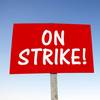The cliche “the more things change, the more they stay the same,” certainly applies to the past, current and future role of the Norwegian maritime cluster in the grand scheme of the international ship and boat building communities. Few countries, if any, can boast the maritime history of Norway, a history that entails many colorful tales surpassed only by the number and magnitude of marine innovations, which have emerged from a country with a population (approx. five million), which is smaller than many large cities. And while corporate consolidations around the globe continue to morph the marine market — including many notable Norwegian companies such as Ulstein, which is now a portion of the Rolls Royce group — it's a safe bet that the level of innovation and creativity emanating from these companies will not waver.
The formula for success in Norway is quite simple, actually, and can be credited to a level of hard-work, market intelligence and cooperation which is unequalled.
Despite its size relative to world population, Norwegians stand tall in the maritime community, with Norwegian merchant vessels accounting for a hefty 10 percent of the world fleet. It is this platform — a diverse fleet of large oceangoing ships — that sets the stage for Norway's product and service prowess. Norwegian cooperation among shipowners, manufacturers, finance and government is legendary in that a mutually beneficial environment was created and is carefully nurtured. Technology companies work hand-in-hand with some of the most quality-conscious shipowners in the world, developing, testing, refining and bringing to market a breadth of advanced marine systems and products.
While the home market plays a critical role on the system and product creation end — and Norwegian owners are undoubtedly swayed to sometimes favor "home cooking" over outside solutions — these companies have proven their mettle on the competitive and increasingly cost competitive international market. An impressive 60+ percent of Norwegian ship's gear is exported worldwide, and major manufacturers through the assistance of the Norwegian Trade Council are continually searching for new means to produce products closer to the consumption area, whether it is through international expansion, partnership or licensing agreement. Highlighted in the ensuing pages are just a few of the country's more notable recent successes.
Unitor, a company, which is a truly international service group with operations in 80 countries, centers its product and service offerings around improving ship management efficiency and reducing operational costs, while promoting safety at sea. Unitor's latest offering — a new soot remover liquid and dosing unit designed to improve diesel engine and turbocharger efficiency — is sure to be a hit given the high profile of propulsion related issues. Offered from the Unitor Chemical Service, the new products from part of the company's redefined marine chemical service concept. Increased soot deposits can cause a range of problems, including exhaust system soot fires. Unitor's new Soot Remover Liquid has been engineered to prevent soot build-up at low exhaust gas temperature (200 degrees C/392 degrees F). The catalysts in the new system form a vapor upon heating, penetrating the deposits and catalyzing the carbon. The modified soot then ignites and is safely burned in the exhaust system. The liquid can be manually or automatically dosed into a vessel's exhaust trunking, upstream of the boiler. The automatic dosing unit — a valuable feature in the attempt to save valuable crew time — uses a Programmable Logic Controller to inject specified doses of the liquid at programmed intervals.
The Litton Ingalls American cruise shipbuilding project has been a natural draw for many European suppliers, particularly Norwegian companies who have a long history of supplying the vibrant Scandinavian passenger vessel market. Valmarine's Damatic XDI was selected to be aboard the new U.S.-build ships. The ship automation system will include coverage of the two most critical onboard systems, the machinery plant and the air conditioning plant. In total, there will be approximately 8,500 input and output signals, and will cover most major areas including control, monitoring and alarm systems; power management systems; heating, ventilation and AC systems; and serial line connections, including the Cegelec/Kamewa Mermaid POD's Control System. Key functionality includes one operator complete control of all machinery and equipment, and an Operator Guided Maintenance System.
Autronica offers a fire safety management system that comprises a new fire detection system combined with a color graphic indication and control system. Linked together, the systems are able to detect all types of fires, indicated the status of the fire situation and monitor/control all actions to be taken. The company, a division of Navia Maritime, has a well-regarded position among cruise operators in the world, a reputation validated by five recent orders, including ships for Trasmeditterranea, Carnival, Strintzis lines, Anek Line and Royal Caribbean.
AutroSafe is the name of the new fire detection system to be installed on all of the new vessels, and is believed to be the only distributed, interactive fire detection system with self verifying detectors. AutroMaster 5000 is the graphic indication and control system, and is a UNIX (or LINUX) based system, which provides a complete GA plan in one scrollable picture with a very high resolution.
Daleside Shipping Services, which has had great success with its Rustibus rust removal system for plain surfaces, has recently introduced its new concept for rust removal on pipe lines. The new system Rustibus Pipe, is a mechanical machine designed for de-scaling and cleaning outer pipe surfaces, 360 degrees in one operation. The system is designed to clear pipes at a rate of up to 25 m/hour, and the system is available in sizes from two to 12 in. The system, for use onboard ships, and oil rigs, is designed to be installed around the pipe by one worker.
Charting A New Course
The Norwegian influence in the development and refinement of electronic charts is well recorded. KonMap Maritime Systems last month launched a new product family, a system that uses the latest IMO/IHO standards for chart presentation overlaid with DXF-data. The systems support S57 — edition 3 and C-Map CM93e3 nautical chart data. The new products family includes: MarECS (electronic chart system); MarINS (integrated nav. System for operation control); MarINS Dredger (dredging and underwater blasting control system); MarWEB (internet client for fleet management and remote ops monitoring; as well as modules for operation monitoring, cable lay control, and a suite of products for production of plots, charts and reports.
A key advantage of the family of products touted by the manufacturer is the fact that — after a moderate initial investment — the sailing system can be upgraded to a complete survey system, KonMap MarINS. This means that the one system alone is enough to cover the full range of operations, from sailing to complex survey control.
On the other side of the business, Primar recently announced that M/S Mignon, operated by Wallenius Lines AB, is now navigating with Primar Official ENC Service on a newly type-approved ECDIS system from Finland's Navintra Ltd. This announcement is significant in that for the first time ever, a vessel can navigate with Official Electronic Navigational Charts (ENCs) instead of traditional paper charts. The vessel, which travels around the globe, will have the ability with the Primar service to electronically download charts and weekly updates, regardless of the vessel's efficiency. ECDIS EC 1000 was type-approved on February 7, 2000 by GSH in Germany.
Based in Stavangar, Norway; Primar acts on behalf of the Hydrographic Offices to deliver an Official ENC service.
Featured videos

Tracking Foreign Vessels Working in the U.S. Jones Act Market

Inside the Electrified Truckable Tug

Inmarsat Enhances Service to Drive Digitalization
Subscribe for
Maritime Reporter E-News
Maritime Reporter E-News is the maritime industry's largest circulation and most authoritative ENews Service, delivered to your Email five times per week









